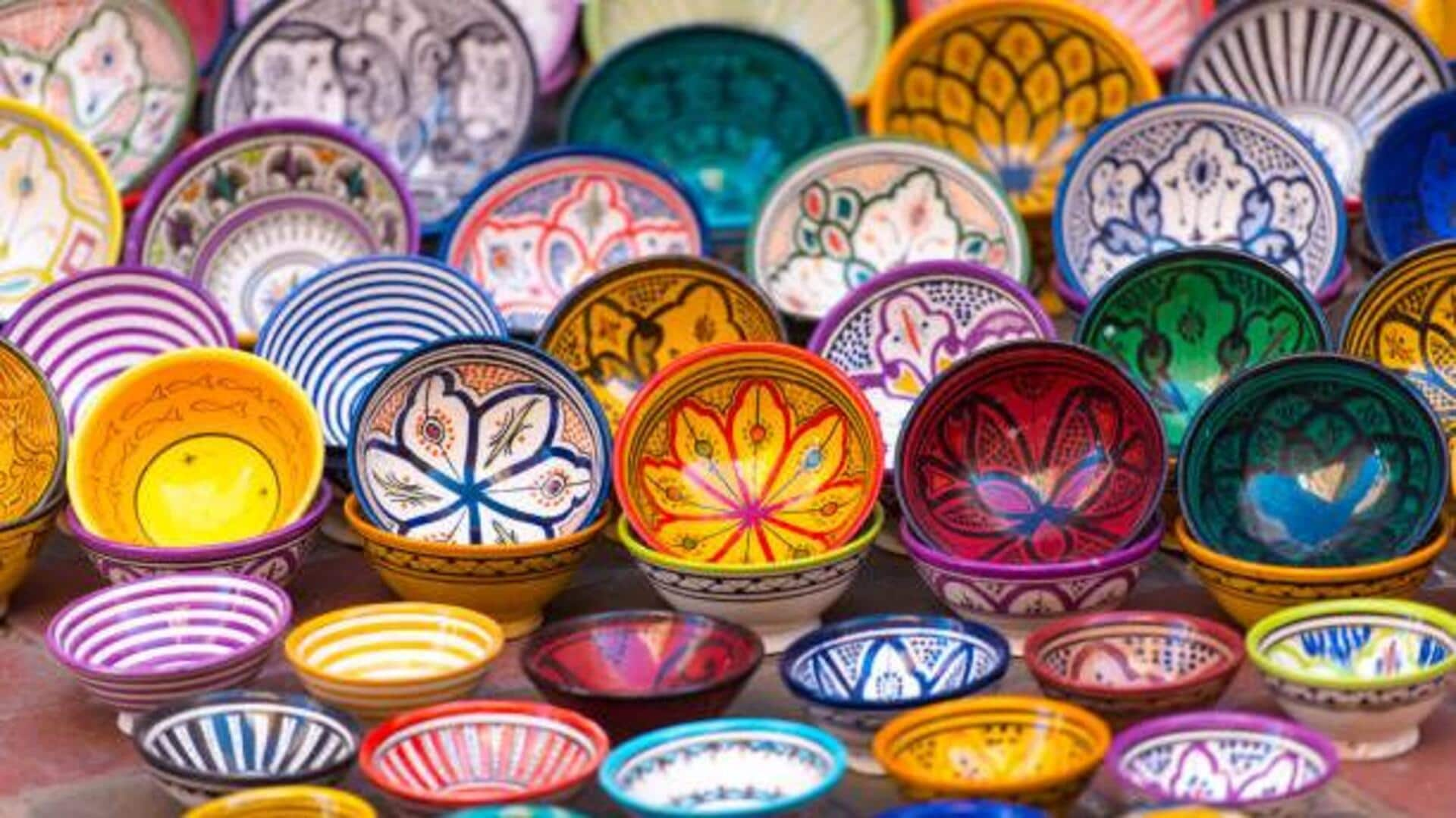
African pottery: 5 timeless designs to explore
What's the story
African pottery is a rich and diverse art that reflects the continent's cultural heritage. Each region has its unique styles and techniques, which were passed on through generations. These pottery designs are not just functional but also serve as a medium for storytelling and expression. Exploring these timeless designs gives you an insight into the traditions and lifestyles of different African communities, showcasing their creativity and craftsmanship.
Zulu Design
Zulu beer vessels
Zulu ukhamba are traditional pots used for brewing and serving in South Africa. Typically made from clay, these vessels are decorated with intricate patterns using natural pigments. The designs often feature geometric shapes or symbols of cultural significance. Ukhamba pots are not merely functional but also serve an important purpose during social gatherings where they represent unity and hospitality.
Ndebele artistry
Ndebele painted pots
The Ndebele people of Southern Africa are famous for their colorful painted pots. These pots are adorned with bold geometric patterns in bright colors such as red, yellow, blue, green, black, and white. The patterns often reflect the identity of the artist or send messages about family or community events. Ndebele painted pots are used for decorative purposes as well as practical uses in daily life.
Mangbetu craftsmanship
Mangbetu elongated neck jars
Originating from Central Africa's Mangbetu tribe, elongated neck jars are unique for their human-like elegant shape and long neck. Traditionally, these jars were used to store water or grains but have become popular decorative items because of their unique design elements such as incised lines or carved motifs of animals or scenes from nature.
Bamileke tradition
Bamileke beaded pots
Bamileke beaded pots hail from Cameroon Western Grassfields region, where they are treasured by members of royalty during events such as weddings or funerals. They are embellished with colorful beads set into detailed patterns forming ancestral symbols. These symbols are indicative of power status in the society hierarchy, being reflective upon historical lineage connections as well.
Yoruba heritage
Yoruba terracotta sculptures
Coming from Nigeria's southwestern region, Yoruba terracotta sculptures showcase the work of artists who mold detailed figurines of humans, animals, and deities alike, using locally sourced clay materials fired at high temperatures. The result? Durable pieces that can last centuries without losing their original form or integrity whatsoever!